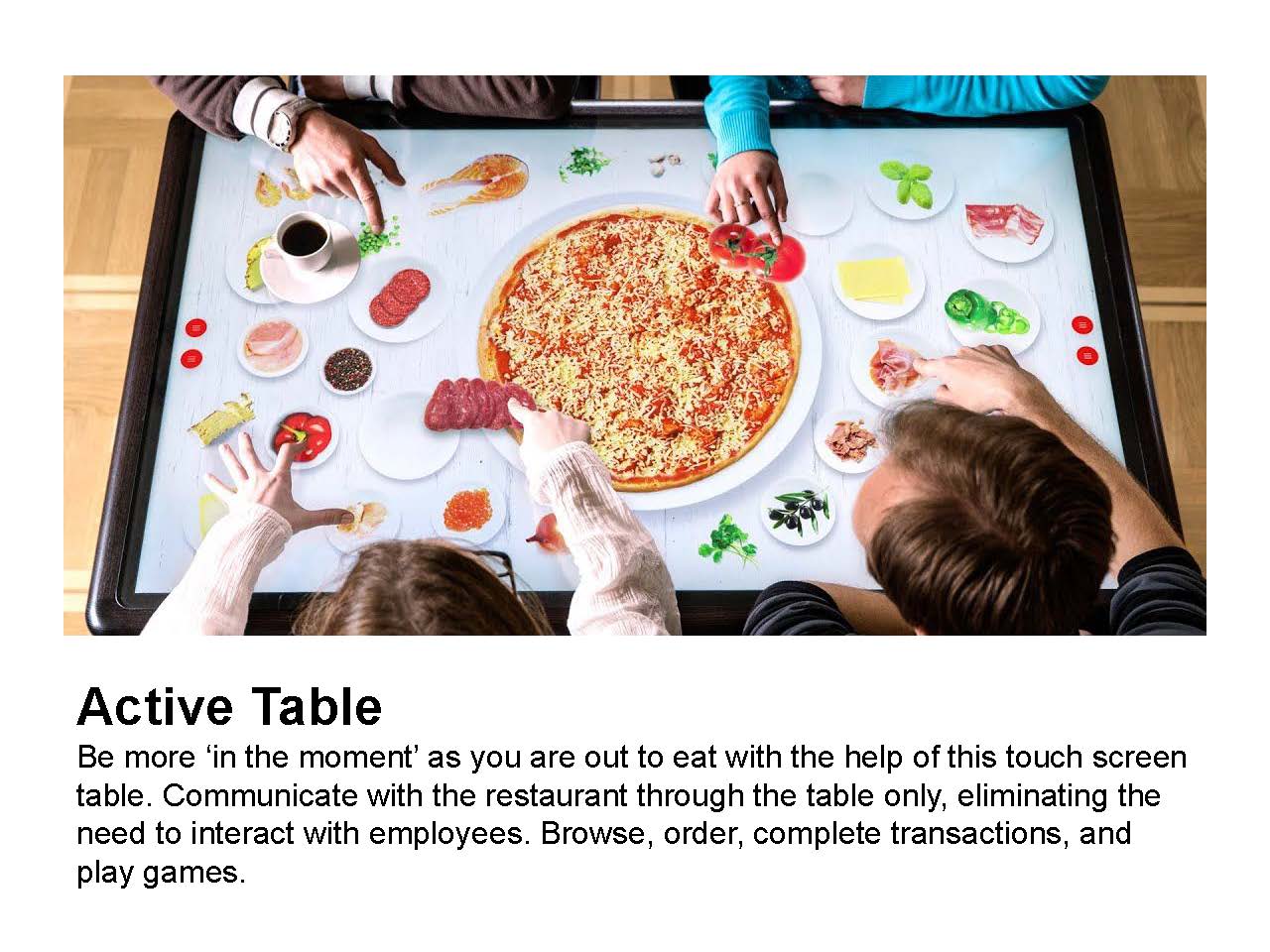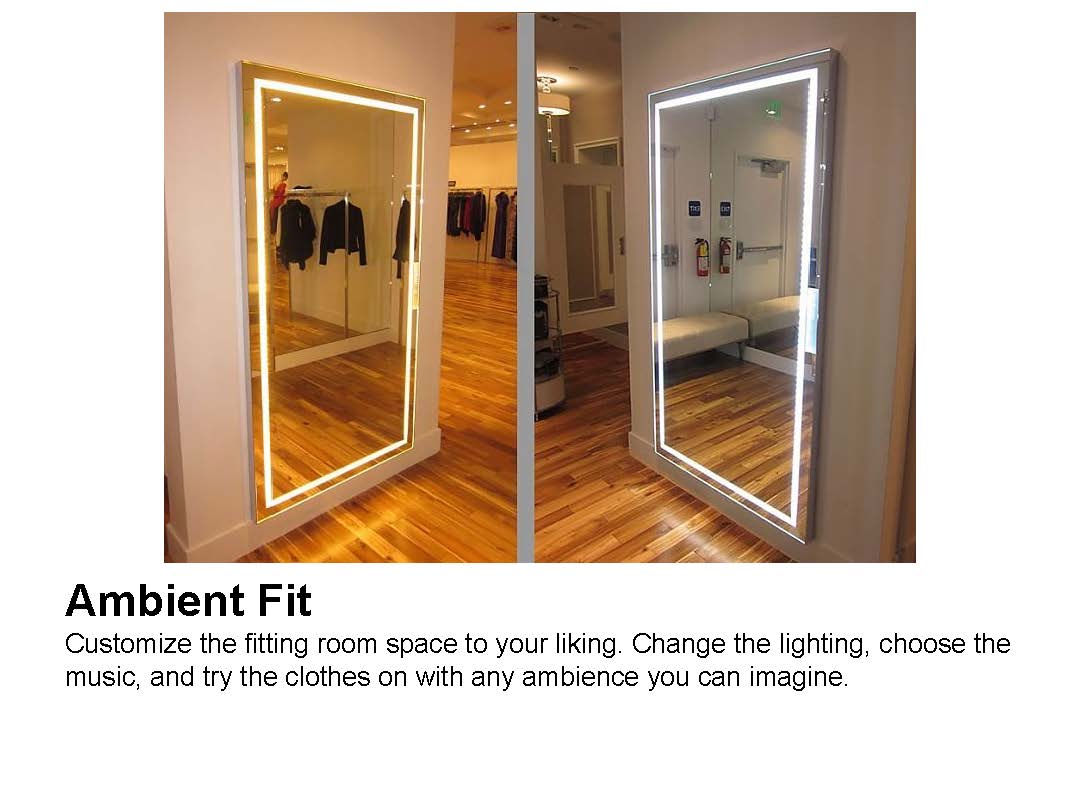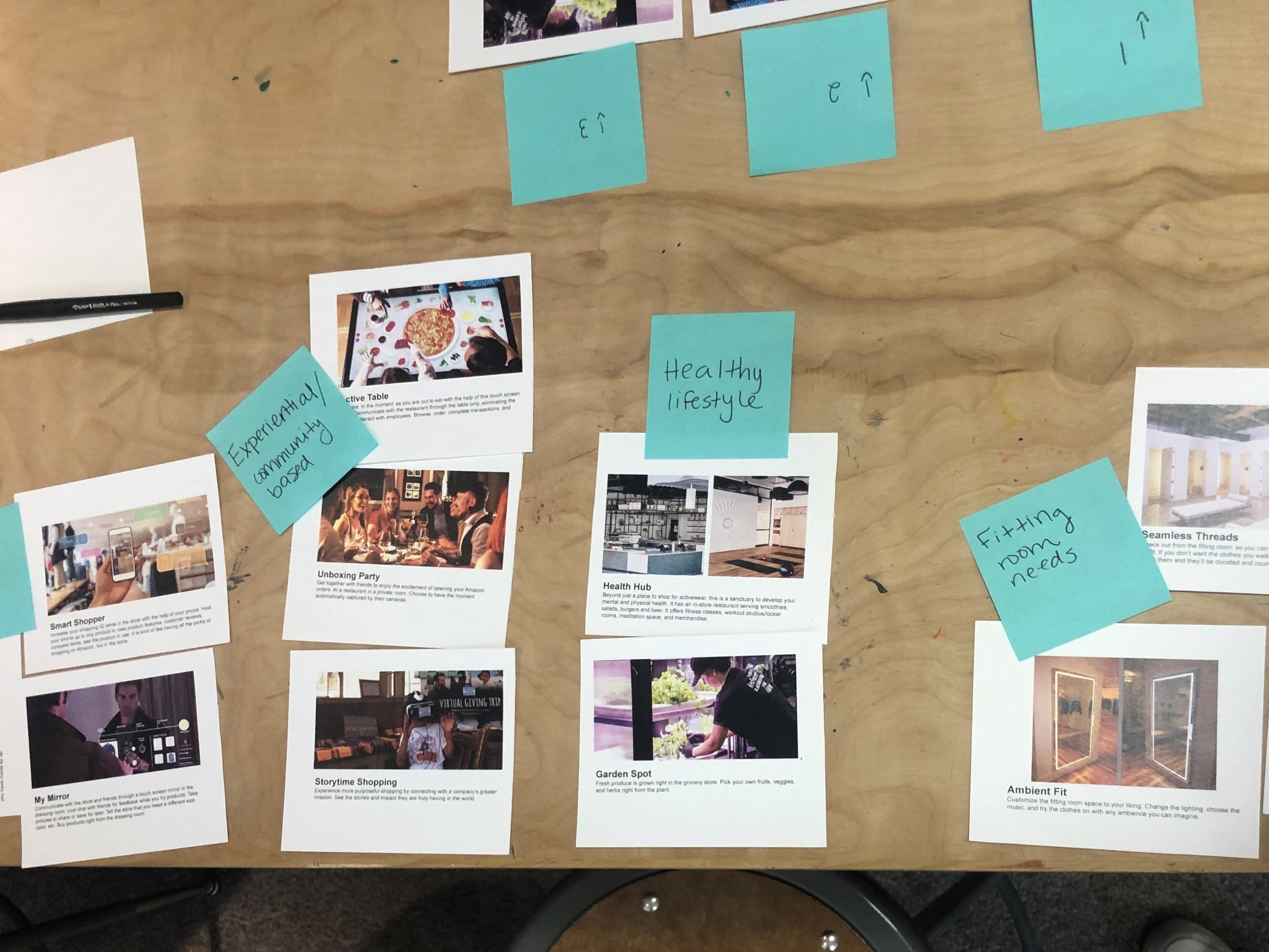Social
My Role
- UX Researcher
The Team
- 3x UX Researchers
Tools
- Photoshop
- Illustrator
- XD
Background
Technology has rapidly changed the shopping experience. Online shopping has become commonplace, and brick-and-mortar retail stores are already struggling to keep up. It'll be important that retail continues to grow and develop with technology. The question we wanted to answer was:
How might we build and operate physical retail stores in a way that makes them competitive with the future of technology?
Research
We started with researching opportunities. There are plenty of stores out there integrating technology into their shopping experiences, and we wanted to get an idea for what's already out there and what's working so far. This involved searching around for retail spaces that are successful at what they do, and then breaking down why they're successful and abstracting into higher concepts.
Exploring the existing product
I decided to look into the applications of virtual and augmented reality. Augmented reality in particular interested me because of how it has the potential to blend physical and digital spaces. There were quite a few businesses that have tried these technologies, but two that stuck out to me were Ikea and Toms.
IKEA
- Ikea developed an augmented reality tool that would allow customers to see what items would look like in their home. Not only does this help customers explore their options in a very personal way, it also helps to reduce returns.
Toms
- Toms is a shoe and apparel company that emphasizes their social initiatives. They installed virtual reality setups in hundreds of their stores that shows customers firsthand the impact of those initiatives.
What I found particularly compelling about Toms is how much story they added to the shopping experience. It's one thing to hear about where a donation is going, and another thing entirely to get to see it. For initiatives that take place halfway across the world, this wouldn't be realistic without technology. I felt that IKEA's use of augmented reality was looking for a much different effect. Instead of using technology to build a narrative, it's a tool to streamline some of the areas that might cause friction for their customers, like trying to find an end table to match their couch. After splitting apart to explore the different possibilities, we reconvened to share what we found. From there we generated a few of the most important aspects of shopping that sum to create the overall shopping experience. These “levers” became the specific concepts that we wanted to explore more in depth to determine how important they actually are to consumers, and how they might be leveraged to create a better customer experience. We narrowed it down to these:
Physicality
Individualization
Availability
Time
Assistance
Story
Experience
User Interviews
This is all well and good, but we needed some user feedback. How important are all of these levers to Gen-Z shoppers? Which ones lend themselves well to physical retail? How might we design a shopping experience that uses the most valuable levers in order to benefit both stores and consumers? Our professor had a design class that we got to run group interviews with. We had them come up with general descriptions for what types of shoppers they were and then had them rank the importance of the levers as well as explain their choices.
Insight #1
-
Individualized shopping experiences are very popular
-
Expressing individuality and developing a sense of identity were mentioned several times. Gen-Z is still very young, and within an age range where developing one's own sense of self is extremely important. Levers such as Individuality, Experience, and Social were generally ranked high.
Insight #2
-
The stores Gen Z shop at already have an advantage over online retail
-
Many of the responses mentioned grocery shopping, gas stations, restaurants, and clothes stores. These places all have advantages over online retail in one way or another: gas stations are speedy and (currently) necessary for driving, restaurants provide an experience for dining. While online clothes shopping is a huge market, the physical feedback from being able to try on and feel a larger number of items occasionally give brick-and-mortar clothes stores an edge.
Insight #3
-
Boutiques and small businesses were mentioned very little
-
Throughout the interview process, small businesses (outside of the food industry) were mentioned very little, if at all. When they were mentioned, it seemed as though they were seen as something to do instead of a regular habit, a one-off stop as opposed to a regularly attended store.
Exploration
From there we started coming up with more specific concepts that encapsulated the more important levers. There's a lot of room for personal interpretation when it comes to abstract concepts like "Experience" and "Story." Providing concrete ideas removed a lot of ambiguity and provided more practical data. Here's a few examples:

This one is all about seeing how interactive technology might improve the social aspects of eating out.

Trying to play to some of the strengths of changing rooms. You can't try stuff on when you shop online, and this is just another way to personalize the experience.

This was one of my favorites. Saves time, makes thrift store donations easier, and builds a narrative for the business.

Hydroponics are incredible, and integrating them into a grocery store could be interesting.
We held some more sessions with fellow students in order to gain insight into the ideas. Having them sort based on personal values and categories gave an avenue for diving deeper into what aspects did and didn't work through interviews.




This was super helpful because it let us tease out some of the connections between the different concepts that we used. It also gave information on what concepts were liked overall and what concepts needed more work. Even the concepts that were disliked provided a lot of information on what isn't interesting, which is just as valuable to know (if not more so!) We analyzed the research we gathered by averaging out their popularity and connecting the comments our participants made back to our original levers.
A look at our board
Outcome
We learned some interesting things about how Gen-Z consumers might influence the future of shopping. Before long they’ll be a dominant force in the market, and it’s going to be up to retail stores to decide if they’re going to stay relevant.
Insight #1
-
Experience is one of the most important aspects of physical retail
-
Online shopping has become a powerhouse in the world of retail. In order for brick-and-mortar stores to compete, they’re going to have to play to their strengths, and experience is one way to do it. Physical stores are just that, physical. They have sights, smells, sounds, tastes, and surfaces that can all be interacted with and built in harmony to create a story that shoppers won’t forget.
Insight #2
-
Stereotypes should be avoided for more than one reason
-
Gen-Z consumers grew up in the digital age, and technology plays a huge role in their lives. I assumed before research that high-use technology solutions would be the most popular, but that wasn't always the case. Instead, some of the more popular concepts that we presented were ones that, yes, used modern technology but ultimately facilitated in-person social and interpersonal interaction. So, while demographics are certainly useful as a marketing tool, being aware of the biases they come with is crucial to developing real solutions.
Insight #3
-
There's plenty of room for diversity and creativity in retail
-
The experience a store provides is very important, but it's not the only reason people go to stores. Not every trip to the gas station has to be mind-bendingly awesome and memorable, but there's plenty of ways the process could be improved with technology while enhancing what's already provided: a quick and easy stop. Maybe an app where you can pick what car you're driving and a quick scan at the pump has you prepaid and octane rating already selected, ready to fuel up? Just an idea, but small innovations have the opportunity to make or break whether some stores will be successful in the future.